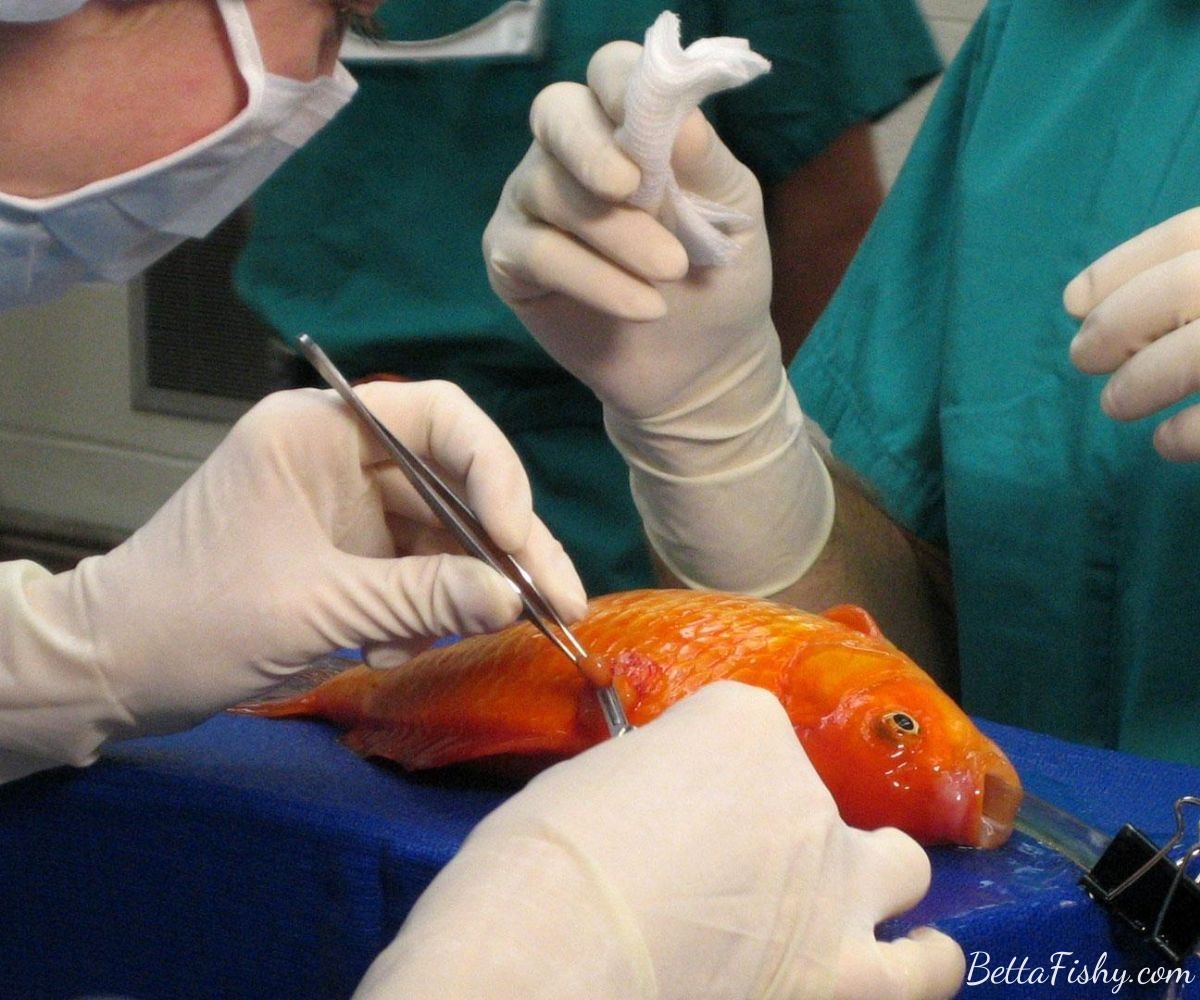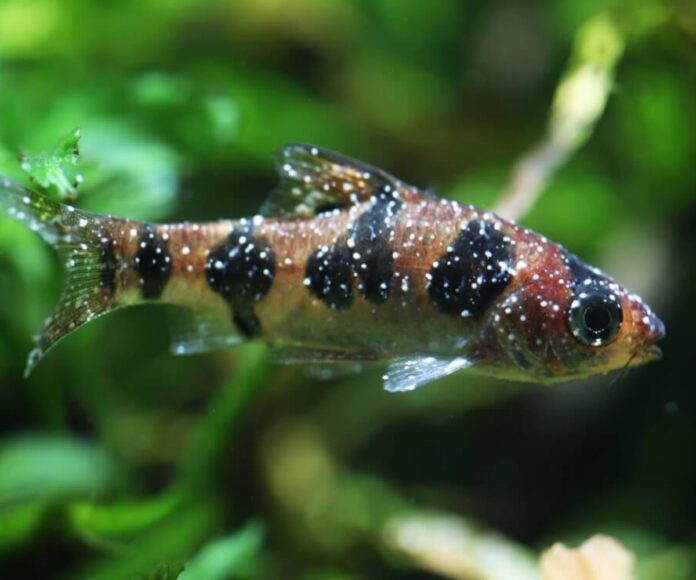The underwater world of aquatics is a mesmerizing and diverse ecosystem, with fish as one of its most captivating inhabitants. However, what is the white fuzzy stuff on my fish? The appearance of white fuzzy growth on fish can disrupt the tranquility of this realm, causing concern among aquarists and fish enthusiasts. In this article, we will delve into the causes, effects, and preventive measures for this enigmatic phenomenon, providing a comprehensive understanding of this issue.
What is The White Fuzzy Stuff on My Fish? Potential Causes

The manifestation of white fuzzy growth on fish can be attributed to a spectrum of underlying causes, each presenting distinct characteristics and requiring tailored interventions. To effectively address this issue, it is crucial to meticulously examine the fish and its environment, seeking clues that may shed light on the root cause.
Fungal Infection
Fungal infections pose a significant threat to the well-being of fish, often exhibiting themselves as white, cottony growth on the fish’s body or fins. These opportunistic pathogens typically thrive in unsanitary conditions, characterized by poor water quality and inadequate filtration systems. Fungal infections are more prevalent in freshwater fish, but saltwater species are not immune to them either.
Fungal infections can enter the fish’s body through open wounds or damaged skin, making it crucial to maintain proper hygiene in the aquarium. The presence of decaying organic matter, such as uneaten food or dead plants, can also create an ideal breeding ground for fungi. Additionally, overcrowding in the tank can lead to increased stress levels in fish, weakening their immune system and making them more susceptible to fungal infections.
To confirm a fungal infection, a microscopic examination of the affected area may be necessary. Treatment options include antifungal medications, increasing water circulation, and maintaining clean and well-oxygenated water. It is essential to follow the recommended dosage and duration of treatment to prevent any adverse effects on the fish.
Costia (Protozoan Infection)
Costia is a common protozoan parasite that can cause white fuzzy growth on fish, often mistaken for fungal infections. These microscopic parasites are present in most aquariums but only become a problem when the fish’s immune system is compromised. Costia infections are more prevalent in freshwater fish, with goldfish and koi being particularly susceptible.
The symptoms of a costia infection include white or gray patches on the fish’s body, clamped fins, and lethargy. The affected fish may also exhibit rapid breathing and loss of appetite. Unlike fungal infections, costia can be challenging to diagnose without a microscope, making it crucial to seek professional help if you suspect your fish has this parasite.
Treatment for costia infections involves using specialized medications, such as formalin or malachite green, which can be harmful to other aquatic life. Therefore, it is essential to follow the instructions carefully and remove any invertebrates from the tank before treatment. Maintaining clean and well-oxygenated water is also crucial in preventing and treating costia infections.
Columnaris (Bacterial Infection)
Columnaris is a bacterial infection that can cause white fuzzy growth on fish, often appearing as a slimy, cotton-like substance on the fish’s skin or fins. This infection is highly contagious and can spread rapidly throughout the tank, making it crucial to identify and treat it promptly. Columnaris is more prevalent in freshwater fish, but saltwater species can also be affected.
The bacteria responsible for columnaris thrive in warm, stagnant water, making overcrowded and poorly maintained tanks ideal breeding grounds. Stressful conditions, such as poor water quality, can also weaken the fish’s immune system, making them more susceptible to this infection. Additionally, introducing new fish to an already infected tank can lead to the rapid spread of columnaris.
To confirm a columnaris infection, a microscopic examination of the affected area may be necessary. Treatment options include antibiotics and antiseptics, which can be added to the tank or administered directly to the affected fish. It is crucial to follow the recommended dosage and duration of treatment to prevent any adverse effects on the fish.
What should I do if I find White Fuzzy Stuff on my Fish?

Proper diagnosis of the underlying cause of white fuzzy growth on fish is crucial in determining the appropriate course of action. Misdiagnosis can lead to ineffective treatments, causing further harm to the fish and potentially spreading the infection to other aquatic life in the tank. Therefore, it is essential to seek professional help if you are unsure about the cause of the white fuzzy growth on your fish.
In addition to proper diagnosis, taking swift and appropriate action is crucial in preventing the spread of the infection and ensuring the well-being of the affected fish. This includes maintaining clean and well-oxygenated water, removing any decaying organic matter from the tank, and following the recommended treatment plan. Regular monitoring of the fish and their environment can also help detect any potential issues early on, allowing for timely intervention.
Preventing White Fuzzy Growth on Your Fish

Prevention is always better than cure, and this holds true for white fuzzy growth on fish as well. By implementing proper preventive measures, aquarists can minimize the risk of their fish developing this condition and maintain a healthy and thriving aquatic environment.
Proper Tank Maintenance
Maintaining a clean and well-maintained tank is crucial in preventing white fuzzy growth on fish. This includes regular water changes, removal of uneaten food and decaying organic matter, and proper filtration systems. Overcrowding in the tank should also be avoided, as it can lead to increased stress levels in fish and make them more susceptible to infections.
Quarantine New Fish
Introducing new fish to an existing tank can introduce potential pathogens, leading to the rapid spread of infections. Therefore, it is crucial to quarantine new fish for a few weeks before introducing them to the main tank. This allows for observation and early detection of any potential issues, preventing the spread of infections to other aquatic life.
Proper Nutrition
A balanced and nutritious diet is essential for maintaining the health and immune system of fish. Poor nutrition can weaken their immune system, making them more susceptible to infections. Therefore, it is crucial to provide a varied diet that meets the nutritional needs of the fish species in your tank.
Conclusion
White fuzzy growth on fish, commonly known as “What is The White Fuzzy Stuff on My Fish?” can be a cause for concern among aquarists and fish enthusiasts. However, with proper understanding and preventive measures, this issue can be effectively managed. By diligently identifying the underlying cause and taking swift and appropriate action, aquarists can ensure the well-being of their fish and maintain a thriving aquatic environment.
Regular monitoring and maintenance of the tank are also crucial in preventing the occurrence of this enigmatic phenomenon. This includes maintaining proper water parameters, such as temperature, pH levels, and ammonia levels, as well as regular water changes and proper filtration. Additionally, providing a stress-free environment for the fish, with adequate hiding spots and appropriate tank mates, can help prevent the growth of white fuzzy stuff.
In cases where the white fuzzy growth is caused by a fungal infection, treatment with antifungal medications specifically formulated for fish can be effective. It is important to follow the instructions provided by the medication and consult a veterinarian or experienced aquarist if needed. Implementing proper quarantine procedures for new fish and equipment can also help prevent the introduction of potential pathogens into the tank.
With these measures in place, aquarists can continue to enjoy the beauty and serenity of the underwater world without the worry of white fuzzy growth on their fish. By staying vigilant and proactive, aquarists can create a healthy and thriving environment for their beloved aquatic companions.


